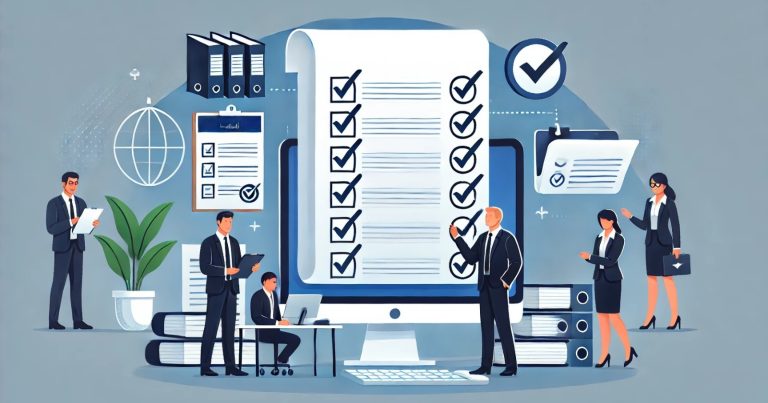IFRS 16 is the global accounting standard for lease accounting by the International Accounting Standards Board (IASB). It superseded IAS 17 and fundamentally transformed companies’ disclosure of lease arrangements in their financial reports. IFRS 16 mandates lessees to bring nearly all leases to the balance sheet, disregarding the operating and finance lease distinction. Companies have to adhere to IFRS 16 lease accounting to maintain financial transparency and proper reporting. This article discusses IFRS 16, its scope, lessee accounting, effects on financial statements, and disclosure requirements.
What is IFRS 16?
The IFRS stands for International Financial Reporting Standards, and the IFRS 16 specifically deals with lease accounting. It applies beginning 1 January 2019 to all companies reporting under International Financial Reporting Standards (IFRS). IFRS 16 leases were introduced generally to increase transparency by requiring lessees to recognise leases on their balance sheets. IFRS (International Financial Reporting Standard 16)
Lessees are required under IFRS 16 lease accounting to recognise a right-of-use asset and a lease liability for substantially all leases, regardless of lease classification. This method removes the previous treatment of operating leases as off-balance-sheet items under IAS 17. IFRS 16 provides greater transparency of a company’s financial obligations for investors and stakeholders.
Scope and Applicability of IFRS 16
IFRS 16 Straightforward lease accounting rules It is relevant to many organisations and types of lease arrangements, and some exclusions are given to reduce administrative requirements for business.
Entities Covered Under IFRS 16
IFRS 16 is relevant for publicly listed companies for whom IFRS is mandatory, as well as privately held companies applying IFRS voluntarily, and establishes principles for all organizations that lease assets such as plants, properties, and vehicles. It also includes multi-national businesses with operations undertaken in countries aligned with IFRS standards.
Exemptions Under IFRS 16
IFRS 16 contains exemptions for short-term leases, which are leases with a term of 12 months or less that do not include a purchase option, as well as low-value asset leases such as laptops, office furniture, and small equipment. Leases that are off-balance-sheet are considered, therefore, administrative work is lessened, accounting is simplified, and businesses are happier because these leases are not reported.
Leases Covered Under IFRS 16
The international financial reporting standards applies to all lease agreement types, including real estate leasing, such as office space, warehouses, and retail spaces; vehicle leasing such as company cars, trucks, and delivery vans; and equipment leasing, such as machinery, IT equipment, and industrial tools. It also forces companies to put lease liabilities on their balance sheet enabling more financial transparency.
Lessee Accounting Under IFRS 16
This ensures that lessees account for and disclose lease transactions entered into in accordance with IFRS 16 in the financial statements. Related party transactions, recognition of lease liabilities and right-of-use assets offerings.
Recognition of Leases
Regarding IFRS 16, lessees must account for a right of use (ROU) asset and a lease liability at the balance sheet level. The right of use (ROU) asset represents the right of the lessee to use the leased asset for the lease period. This is done by bringing on the balance sheet the lease liability, which is equal to the present value of future lease payments, thus ensuring lease obligations are transparently reflected.
Measurement of Lease Liability
A lessee will record a lease liability and an asset for the Right-of-Use (RoU) asset equal to, at a minimum, the present value of all future lease payments, discounted using either the lessee’s incremental borrowing rate (if the underlying asset is not of the same class as those that would be used to determine the lease term) or the interest rate implicit in the lease (if recoverable). Include fixed payments, variable payments under a lease that depend on an index or a rate, and amounts expected to be paid under residual value guarantees. This payment is related to purchase options if the lessee is reasonably certain to exercise them.
Measurement of Right of Use Asset
When there is a lease, the right-of-use asset is accordingly measured at first about the contract and represents the amount that leases a liability. It encompasses any payments made before the lease starts, any initial direct costs incurred, and, if applicable, any expected costs of restoring the asset. Lessee’s company cars are leased under a series of master lease agreements. Lessee uses eight different types of company car, which vary by price and are assigned to staff on the basis of seniority and territory. Lessee has a master lease agreement for each different type of company car.
Subsequent Accounting
To minimise costs, Lessee (a) enters into a separate eight-year lease of another floor in the building leased that will be available for use at the end of Year 7 and (b) terminates early the lease entered into by Entity A with effect from the beginning of Year 8. After initial recognition, lessees have to depreciate the right-of-use asset over the shorter of the lease’s cost-based term or the asset’s useful life. The liability for the lease decreases with each payment, and interest expense is recognized on the remaining balance. Doing so means that lease expenses do make their way into financial statements.
Impact of IFRS 16 on Financial Statements
IFRS 16 lease accounting highly impacts financial reporting. The key impacts on different financial statements are:
- Balance Sheet: By the new standards, lessees will recognise lease liabilities and right-of-use assets on their balance sheets. This presents a boost on reported assets and liabilities which influences financial ratios.
- Income Statement: Under IAS 17, lease payments were treated as an operating expense. As such, the expenses are bifurcated to depreciation (ROU asset) and interest expense (lease liability) under IFRS 16. This boosts lessees’ EBITDA (Earnings Before Interest, Taxes, Depreciation, and Amortization).
- Cash Flow Statement: Lease payments are separated between principal repayment (financing activities) and interest expense (operating or financing activities). It affects the classification of cash flows related to leases.
Disclosure Requirements Under IFRS 16
IFRS 16 leases make the disclosures more comprehensive to enhance the transparency statement. In this way, proper disclosure ensures stakeholders understand the financial impact of IFRS 16 lease accounting.
Lessee Disclosures
To ensure transparency concerning financials for leases under IFRS 16, lessees must disclose critical financial details. Entities should disclose the carrying amount of right-of-use assets by asset class, and lease liabilities, distinguishing between current and non-current portions. A lessee also needs to account for and disclose interest on the lease liabilities, expenses from short-term and low-value leases, and from variable payments not included in lease liabilities. Such disclosures allow investors and stakeholders to assess a company’s lease commitments and financial condition.
Lessor Disclosures
Lessors should also make transparent disclosures on income and risks arising from leases. They must report finance and operating leases separately so the company’s earnings are transparent. Lessees should provide and disclose maturity analyses to show the financial risks associated with lease agreements. Moreover, selling profit or loss under lease releases is needed. Such disclosures allow investors and regulators to assess a lessor’s financial health and risk management strategies.
Comparing IFRS 16 with Other Lease Accounting Standards
IFRS 16 replaced IAS 17 and had a significant impact on leasing accounting by bringing it more in line with ASC 842 under US GAAP. Unlike those previous standards, IFRS 16 requires lessees to record most leases on the balance sheet, thereby impacting financial metrics like EBITDA.
| Aspect | IFRS 16 | ASC 842 (US GAAP) | IAS 17 (Old Standard) |
| Lessee Accounting | All leases are recognized on the balance sheet. | Operating & finance leases remain separate. | Operating leases off-balance sheet. |
| Lessor Accounting | Similar to IAS 17. | Similar to IFRS 16. | Operating and finance lease model. |
| Impact on EBITDA | Increases EBITDA. | Increases EBITDA. | No impact. |
| Effective Date | January 1, 2019. | January 1, 2019. | Replaced by IFRS 16. |
Relevance to ACCA Syllabus
The ACCA syllabus covers IFRS 16 (Leases) at FR and SBR levels. It replaces IAS 17 and requires lessees to recognize right-of-use assets and lease liabilities on the balance sheet. The Importance of IFRS 16 for Financial Reporting accuracy, classification of leases and analysis of financial statements.
IFRS 16 ACCA Questions
Q1: According to IFRS 16, a lease is classified as a finance lease if:
A) Lease payments are expensed on the income statement
B) The lessee measures and presents a right-of-use asset and a lease liability
C) The term of the lease is less than 12 months
D) The lease do not conferring control over the asset
Ans: B) The lessee records a right-of-use asset and a lease liability
Question 2: Measure lease liabilities (IFRS 16: Leases)
A) Fair value of the leased asset
B)The present value of future lease payments
C) At the lust terms of the lease term
D) The gross lease payment amount
Ans: B) Current value of future lease payments
Q3: An operating lease is considered to be the right to use an asset (the “leasehold interest”) for the entirety, or a portion, of the asset’s useful life.
A) No impact on the balance sheet
B) Only affects cash flows
C) Requires recognition of right-of-use asset and lease liability
D) Only affects the income statement
Ans: A) Requirement to recognize nearly all leases as a right-of-use asset or lease liability
Q4: When it comes to accounting short-term leases (less than 12 months), how should they be treated under IFRS 16?
A) Expensed in the income statement
B) They should be capitalized as right-of-use assets
C) They are treated like long term leases
D) Budgets are disclosed only in the notes to financial statements
Ans: A) They are charged to income statement
Q5: What discount rate to apply when measuring lease liabilities under IFRS 16?
A) The rentals are at the lessee’s incremental borrowing rate or at the rate implicit in the lease
B) The interest rate of the central bank
C) The firm’s historical cost of capital
D) The rate of return on a risk-free asset
Ans: A) The lessee’s incremental borrowing rate or the implicit rate in the lease
Relevance to US CMA Syllabus
The CMA syllabus includes Lease Accounting in Financial Reporting and Corporate Finance. US CMA candidates also learn about lease classification, financial impact, and cash flow analysis. IFRS 16 knowledge addresses the business financing decisions, including the lease obligations and the capital structure.
IFRS 16 US CMA Questions
Q1: What is the previous leasing accounting standard replaced by IFRS 16?
A) IFRS 15
B) IAS 17
C) IFRS 9
D) ASC 842
Ans: B) IAS 17
Q2: Lessee payments on a lease are classified as under IFRS 16:
A) Operating expenses
B) Cash flows from financing and operations
C) Cost of sales
D) Investment income
Ans: B) Cash flows from financing and operating
Q3: What is the biggest financial statement impact of IFRS 16 to lessees?
A) Same as lease accounting treatment
B) Capitalization of leases increases debt and asset
It will result in lower net income since lease expenses will be higher.
D) Decrease in cash flows from operating activities
Ans: B) More liabilities, more assets due to lease capitalization
Q4: For a variable lease payment that depends on revenues from sales when applying IFRS 16:
A) Considered in lease liability computation
B) Charged in the period it takes place
C) that is added to the value of the right-of-use asset
D) Viewed as a financial burden
Ans: B) Charged to the income statement when it happens
Q5: When it comes to financial analysis, what would you consider the main benefit of capitalising leases under IFRS 16?
A) It boosts net income as reported
B) It enhances operating cash flow because it gets rid of lease expenses
C) It replaces the requirement to present leases
D) It lowers total liabilities
Ans: B) It enhances operating cash flow because it gets rid of lease expenses
Relevance to US CPA Syllabus
Under ASC 842 (US GAAP), Lease Accounting is covered in Financial Accounting & Reporting (FAR) in the US CPA Syllabus. Right-of-use assets, lease amortization, and lease disclosures are topics covered in the CPA exams. Prior application assures SEC lawfulness and Finance statements accuracy.
IFRS 16 US CPA Questions
Q1: Assessment of how operating leases impact company’s return of equity (ROE)
A) Increase ROE by shortening liabilities
B) More provisions of lower correlated output will decrease ROE
C) No effect on ROE
D) Higher ROE through lower costs
Ans: B) As Higher reported debt will leads to decrease in ROE
Q2: Why is the debt/ equity ratio distorted if operating leases are capitalised?
A) Increase in debt-to-equity ratio
B) Reduces financial leverage
C) is neutral to balance sheet
D) Removes lease liabilities
Ans: A) Increase in debt-to-equity ratio
Q3: Which major financial ratio is influenced by the capitalization of leases under IFRS 16?
A) Return on Equity (ROE)
B) Debt-to-Equity Ratio
C) Gross Profit Margin
D) Earnings Per Share (EPS)
Ans: B) Debt-to-Equity Ratio
Q4: Which of the following is NOT a consideration in assessing whether a lease is IFRS 16?
A) The duration (term) of the lease
B) The ability of the lessee to terminate the lease without penalty
C) Jurisdiction of lessee legal
D) If the lessee has power over the use of the asset
Ans: C) Jurisdiction of the lessee in law
Q5: What is the biggest difference between IFRS 16 and ASC 842 (US GAAP) for lease accounting?
A) Lessees continue to hold a distinction under US GAAP between finance and operating leases
B) All lease disclosures are eliminated by IFRS 16
C) IFRS 16 permits leases to be expensed in full immediately
D) All leases are recorded as right-of-use assets under US GAAP
Ans: A) Lessee keeps a distinction between finance and operating leases under US GAAP
Relevance to CFA Syllabus
Financial Reporting & Analysis and Corporate Finance topics under the CFA curriculum cover Lease Accounting. Finance vs. Operating Leases, Ratios, Valuation. CFA Suggestion. As IFRS 16 can significantly impact investment decisions, credit risk assessment and financial modelling, it is crucial to understand its workings.
IFRS 16 CFA Questions
Question 1: IFRS 16 dictates the accounting treatment of a finance lease in the lessee financial statements.
A) Income statement expense
B) The lease liability and the right of use asset
C. As an operating lease, as a rent expense
D) An off-balance sheet item
Ans: B) A lease liability and a right-of-use asset
Q2: Why was IFRS 16 introduced?
A) Improve lease transparency and remove off-balance sheet financing
B) To reduce lease expenses
C) To increase profitability
D) To eliminate lease reporting requirement
Answer: A) To improve transparency of lease and remove off- balance sheet financing
Q3: How does IFRS 16 affect net income during the early years of lease?
A) There was an increase in depreciation and interest expenses making net income down
B) Net income does not change
C) Net income goes up because expenses go down
D) Lease accounting does not affect net income
Ans: A) Higher depreciation and interest cost, now net income is lower.
Q4 Which metric does IFRS 16 lease recognition negatively impact?
A) Return on Assets (ROA)
B) Gross Profit Margin
C) Revenue Growth Rate
D) Earnings Per Share
Ans : A) Return on Assets (ROA)


